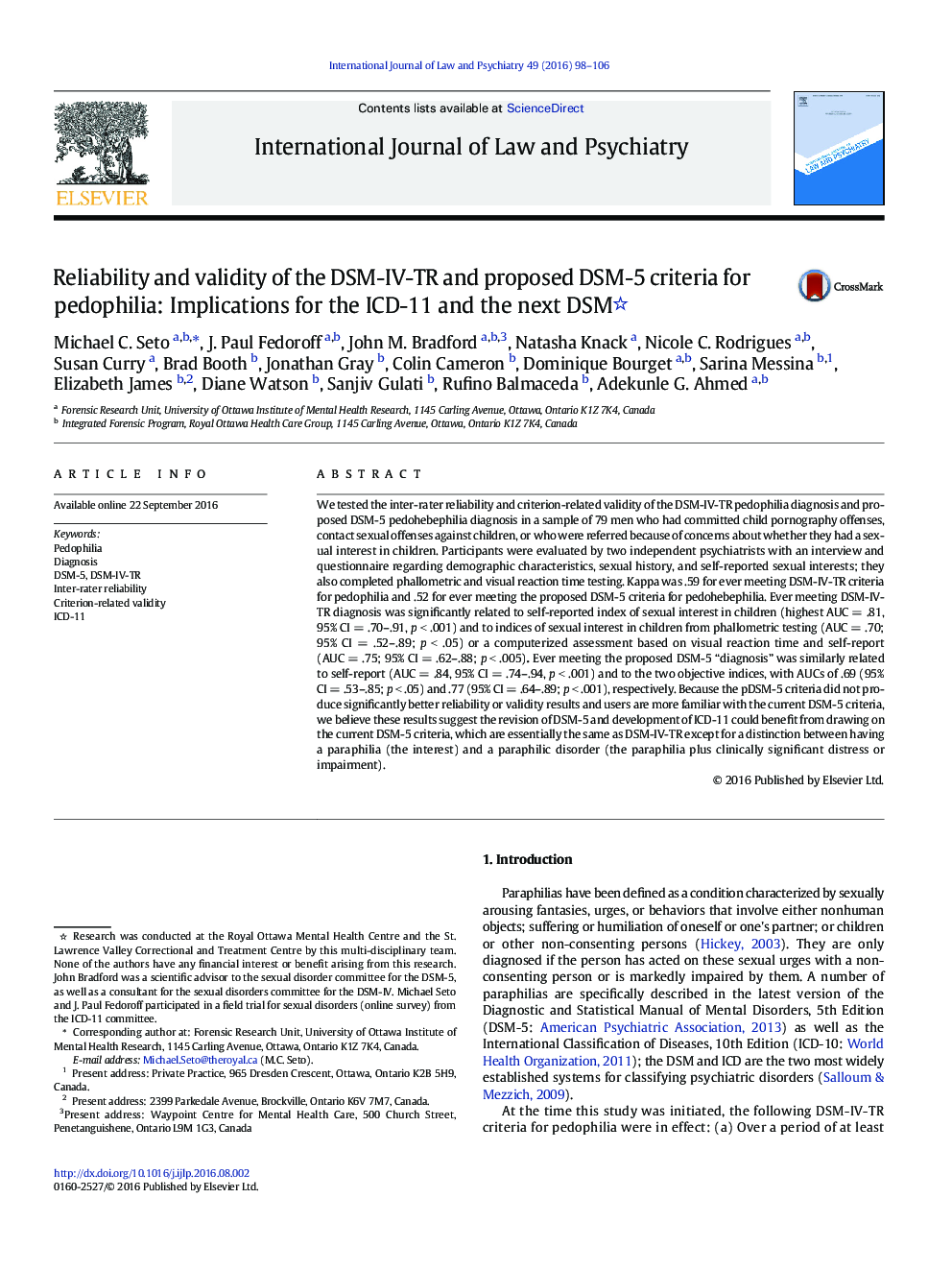| کد مقاله | کد نشریه | سال انتشار | مقاله انگلیسی | نسخه تمام متن |
|---|---|---|---|---|
| 6463008 | 1422273 | 2016 | 9 صفحه PDF | دانلود رایگان |

We tested the inter-rater reliability and criterion-related validity of the DSM-IV-TR pedophilia diagnosis and proposed DSM-5 pedohebephilia diagnosis in a sample of 79 men who had committed child pornography offenses, contact sexual offenses against children, or who were referred because of concerns about whether they had a sexual interest in children. Participants were evaluated by two independent psychiatrists with an interview and questionnaire regarding demographic characteristics, sexual history, and self-reported sexual interests; they also completed phallometric and visual reaction time testing. Kappa was .59 for ever meeting DSM-IV-TR criteria for pedophilia and .52 for ever meeting the proposed DSM-5 criteria for pedohebephilia. Ever meeting DSM-IV-TR diagnosis was significantly related to self-reported index of sexual interest in children (highest AUC = .81, 95% CI = .70-.91, p < .001) and to indices of sexual interest in children from phallometric testing (AUC = .70; 95% CI = .52-.89; p < .05) or a computerized assessment based on visual reaction time and self-report (AUC = .75; 95% CI = .62-.88; p < .005). Ever meeting the proposed DSM-5 “diagnosis” was similarly related to self-report (AUC = .84, 95% CI = .74-.94, p < .001) and to the two objective indices, with AUCs of .69 (95% CI = .53-.85; p < .05) and .77 (95% CI = .64-.89; p < .001), respectively. Because the pDSM-5 criteria did not produce significantly better reliability or validity results and users are more familiar with the current DSM-5 criteria, we believe these results suggest the revision of DSM-5 and development of ICD-11 could benefit from drawing on the current DSM-5 criteria, which are essentially the same as DSM-IV-TR except for a distinction between having a paraphilia (the interest) and a paraphilic disorder (the paraphilia plus clinically significant distress or impairment).
Journal: International Journal of Law and Psychiatry - Volume 49, Part A, NovemberâDecember 2016, Pages 98-106